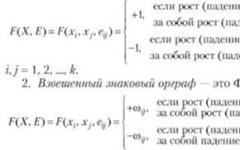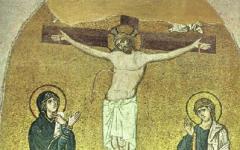1. Раскрытие особенностей королевской власти в Англии на примере личности монарха Генриха VIII.
2. Развитие навыка монологической речи по теме урока.
3. Развитие лингвострановедческого кругозора учащихся.
Воспитательные:
1. формировать у учащихся чувство уважения и интереса к истории страны изучаемого языка;
2. воспитание культуры общения.
Развивающие:
1. развивать языковые, интеллектуальные и познавательные способности учащихся;
Практические:
1.совершенствование лексических навыков;
2. развивать навыки монологической речи на английском языке;
3. приобщить к культурным ценностям страны изучаемого языка.
Тип урока
: интегрированный урок истории и английского языка.Оборудование
: экран, мультимедийное оборудование, карта Великобритании.Ход урока
1. Приветствие.
Учитель истории.
Учитель английского языка.
2. Warming-up.
T: What do you know about England?
(Geographical position, the capital, the symbols, the political system)
(работа с картой Великобритании)
3. T: Now we are going to travel to England of the XVI century.
(играет музыка, на экране изображение Англии XVI века)
4. Учащиеся с учителем истории дают общую характеристику Англии XVI века.
Длившаяся почти 30 лет вражда домов Йорков и Ланкастеров истощила силы английской аристократии. Англия желала мира. Конец феодальным распрям положил приход на её трон новой династии- Тюдоров. Отныне Алая и Белая Розы слились в его гербе, составив символ новой династии- тюдоровскую розу. При Тюдорах началось укрепление английского государства. Что сделал Генрих 7 ? (на вопрос учителя отвечают ученики)
Подавил мятежи своих противников
Заапретил крупным феодалам иметь собственные вооруженные дружины
Окружил себя преданными дворянами незнатно происхождения и создал так называемую новую аристократию, которая не бросала вызов королю, а ожидала отнего милостей и тянулась ко двору.
Поощрял торговлю и мореплавание
5. T: Henry VIII was the second Monarch of the Tudor Dynasty. What do you know about him?
Pupils’ reports about Henry VIII.
Королевская власть ещё более укрепилась при его сыне- Генрихе VIII стало складываться централизованное государство связь со столицей осуществлялась через специальных королевских агентов – шерифов. (Получил многочисленный аппарат, на который он не тратил средства из казны, они считали это своим долгом.) К концу правления он имел 55 дворцов. Лондон стал одной из самых блестящих столиц, и на службу к Генриху VIII устремились художники, скульпторы, поэты из Италии, Франции, Нидерландов, Германии. Все занимались литературой и искусством, устраивались праздники, театральные представления. В начале своего правления король привлекал на службу ученых – гуманистов (кого так называли?). Канцлером королевства он сделал видного юриста и одного из самых просвещенных людей Англии- Томаса Мора. Гуманисты надеялись, что Генрих VIII станет идеальным правителем, государем – философом. Однако их надежды не оправдались.
6. T: Henry VIII invited to court outstanding people-humanists of the Renaissance period.
One of them was Thomas More.
What do you know about him? Why was he beheaded?
(Pupils" answers)
S1: Thomas More was the grated thinker and the founder of the Utopic Socialism. In 1561 he wrote a book about Utopia – the best government structure on the Island of Utopia and was invited and appointed Chancellor which made the post the most dangerous in the country.
7. Учащиеся обсуждают учителем истории причины, по которым был обезглавлен Томас Мор.
Из хроники Эдуарда Холла “Триумфальное правление короля Генриха VIII ” (отрывок о казни Томаса Мора)
8. Henry VIII had some problems with the Catholic Church. He disliked the power
of the Church of England. Why? (слайд 4)
Екатерина Арагонская. В Англии распространяются протестантские идеи. Идеи Лютера, весьма популярны у зажиточных слоев общества. Реформация в Англии совершилась по воле короля-”сверху”- личная причина. (ответ ученика)
S1 : The Catholic Church was an international organization, so he couldn’t completely control it.
S2 : The power of the Catholic Church in England could work against Henry’s authority.
S3: Besides, Henry had another reason for opposing the authority of the Church. In 1510 Henry had married Catherine of Aragon. But by 1526 she still not had a son who could be the heir to the throne after Henry’s death. Henry asked the Pope to allow him to divorce Catherine. But the Pope was controlled by Charles V, who was Holy Roman Emperor and King of Spain, and also Catherine’s nephew. For both political and family reasons he wanted Henry to stay married to Catherine.
T: Did this problem trouble Henry VIII?
S4 : This problem had troubled Henry for many years when he met Anna Boleyn, a lady-in-waiting. Anne was not beauty, but the king fell madly in love with her.
(5- слайд). Римский папа (ответ ученика)-короткое сообщение (6-слайд). Анна Болейн(ответ ученика) - короткое сообщение 9. T : Henry VIII started his own Reformation. Обсуждение идей реформации с учителем истории.
10. (7-слайд). Реформация Генрих VIII- (объяснение учителя)
1).1534 “Акт о супрематии” (верховенстве)
-
секуляризация имущества церкви;
Король - глава английской церкви
Стала называться англиканской
закрыты монастыри, монахи изгнаны;
основная идея- оправдание верой;
три таинства: крещение, причастие, покаяние;
перевод Библии на английский язык;
10. Work in groups.
Group1 : What were the positive points in Henry’s reign?
Group2 : What were the negative points in Henry’s reign?
Grpup3 : You will be historians. Give some conclusions about Henry VIII ‘s reign.
(учащиеся обсуждают свои идеи, затем каждая группа защищает свою точку зрения)
11. Making a Quiz.
Choose the correct beginning or ending.
1) The Tudor family came to power…. .
a) after the Hundred Years’ War
b) after the War with Ireland
c) after the Wars of the Roses
2) By 1521 Henry VIII had written an Anti-Lutheran book for which a grateful Pope
Awarded him the title of….
a) Supreme Head of his new church
b) Defender of the Faith
c) Hammer of the Scots
3) Henry VIII closed the monasteries because…. .
a) he wanted to get their wealth and lands
b) he was atheist
c) he quarreled with his first wife
4) Henry VIII wanted to divorce Catherine of Aragon because… .
a) she loved his brother
b) she didn’t give him a son
c) she had a nasty character
5) Henry VIII had his second wife, Anne Boleyn, executed because… .
a) she didn’t give him a son
b) she had six fingers on her hand
c) she was the mother of Elizabeth, who later became the greatest monarch England had ever known
6) Henry VIII broke away from the Catholic Church because… .
a) the Pope refused to allow Henry to divorce Catherine of Aragon
b) the Pope told Henry that hi marriage to Catherine was a sin
c) Henry wanted to become a Protestant
7) All in all Henry VIII had… .
8) Henry VIII wanted to have a son because… .
a) he thought that England would be weak if there were no King to follow him
b) he hated girls
c) he wanted to have somebody to play football with
9) After Henry’s death … came to the throne.
a) his daughter Elizabeth
b) his wife Anne Boleyn
c) his son Edward
10) …. became the greatest monarch England has ever known.
c) Catherine of Aragon
d) Edward, Prince of Walse
12. Подведение итогов .
Т: What have you learnt today?
Использованная литература: Yu.F.Gureeva “Deep are the roots…”, Титул,К.И.Кауфман, М.Ю.Кауфман “Страницы Британской истории”, Титул, Ю.Б.Голицынский “Великобритания”, СПб., Каро,2010.
King Henry VIII (1491-1547) ruled England for 36 years, presiding over sweeping changes that brought his nation into the Protestant Reformation. He famously married a series of six wives in his search for political alliance, marital bliss and a healthy male heir. His desire to annul his first marriage without papal approval led to the creation of a separate Church of England. Of his marriages, two ended in annulment, two in natural deaths and two with his wives’ beheadings for adultery and treason. His children Edward VI, Mary I and Elizabeth I would each take their turn as England’s monarch.
Henry VIII: Early Life
Henry was born January 28, 1491, the second son of Henry VII, the first English ruler from the House of Tudor. While his older brother Arthur was being prepared for the throne, Henry was steered toward a church career, with a broad education in theology, music, languages, poetry and sports.
Did you know? An accomplished musician, Henry VIII of England wrote a song entitled "Pastime With Good Company" that was popular throughout Renaissance Europe.
Arthur had been betrothed since age 2 to Catherine of Aragon, the daughter of the Spanish rulers Ferdinand and Isabella, and in November of 1501 the teenage couple were married. Months later, Arthur died of a sudden illness. Henry became next in line for the throne and in 1503 was betrothed to his brother’s widow.
ADVERTISEMENT
ADVERTISEMENT
Thanks for watching! Visit Website
Henry VIII: First Years as King
Henry VIII took the throne at age 17 and married Catherine of Aragon six weeks later. Over the next 15 years, while Henry fought three wars with France, Catherine bore him three sons and three daughters, all but one of whom died in infancy. The sole survivor was Mary (later Mary I), born in 1516.
ADVERTISEMENT
Thanks for watching! Visit Website
Henry was an active king in those years, keeping a festive court, hunting, jousting, writing and playing music. He issued a book-length attack on Martin Luther’s church reforms that earned him the title “Defender of the Faith” from Pope Leo X. But the lack of a male heir—especially after he fathered a healthy illegitimate son, Henry FitzRoy, in 1519—gnawed at the king.
Henry VIII: Dissolving a Marriage, Splitting the Church
By the 1520s, Henry had become infatuated with Anne Boleyn, a young woman in his wife’s entourage. He also worried that his marriage to Catherine had been cursed by God because of the Old Testament ban on marrying the widow of one’s brother. The king decided to seek a papal annulment that would free him to remarry.
With the assistance of his powerful adviser Cardinal Wolsey, Henry petitioned Pope Clement VII but was rebuffed due to pressure from Catherine’s nephew, the Holy Roman Emperor Charles V. Wolsey was forced from power for his failure and died in 1630 awaiting trial for treason.
With the backing of the English parliament and clergy, Henry ultimately decided that he didn’t need the pope’s permission to rule on issues affecting the Church of England . In 1533 Henry and Anne Boleyn were married, and their daughter Elizabeth was born. Mary was declared illegitimate and Elizabeth named his heir. England’s monasteries were closed and in most cases sold off to add to Henry’s wealth.
Henry VIII: More Marriages and Deaths
In January of 1536 Henry was unhorsed and injured during a jousting tournament. When news of his accident reached the pregnant Anne, she miscarried, delivering a stillborn son. Henry then spurned her, turning his affections to another woman of his court, Jane Seymour. Within six months he had executed Anne for treason and incest and married Jane, who quickly gave him a son (the future Edward IV) but died two weeks later.
Henry’s fourth marriage bore similarities to his first. Anne of Cleves was a political bride, chosen to cement an alliance with her brother, the ruler of a Protestant duchy in Germany. The marriage only lasted a few days before Henry had it annulled. He then married Catherine Howard, but two years later she too was beheaded for treason and adultery.
In the last years of his reign Henry grew moody, obese and suspicious, hobbled by personal intrigues and by the persistent leg wound from his jousting injury. His final marriage, to the widow Catherine Parr in 1543, saw his reconciliation with Mary and Elizabeth, who were restored to the line of succession.
Henry VIII: Death and Legacy
Henry VIII died on his 56th birthday, January 28, 1547. His 9-year-old son Edward VI succeeded him as king but died six years later. Mary I spent her five-year reign steering England back into the Catholic fold, but Elizabeth I , the longest-reigning of the Tudor monarchs, re-entrenched her father’s religious reforms.
On June 28, 1941 Henry the VIII of England was born. This young man will form his own church. He will succeed to the throne in 1509. He will also marry six women! Something good will happen when he is king, he will unite England and Wales and will also do some bad things like executing people who would not follow his rules. In 1539, the Act of Supremacy declared Henry to be the head of the Church of England.
King Henry the VIII of England had a good side and a bad side. Though popular with the people of England and also very talented he had many bad times and many good times for himself. Henry was not only selfish but, also handsome and had a hearty personality, he was also a gifted scholar, linguist, composer, and a musician. He was talented at many sports and was also good with the ladies. Henry was the second son and the third child of his father. Henry the VIII died in 1509, the only reason Henry would become king is because of his brothers, Arthur, death in April of 1502. Soon after that, Henry would marry his first wife, his brother (Arthur"s) widow, Catherine of Aragon. Many wifes would follow after her.
During most of his early reign, Henry relied on Thomas Cardinal Wosley to do much of the political and religious activities. Henry soon got tired of his marriage with Catherine of Aragon, so he decides that he doesn"t want to be married to her anymore, so he tells Thomas Wosley to talk to the pope so he can divorce Catherine. But, Cardinal Wosley wasn"t able to convince the pope, so in 1529 Henry took Wosley"s authority away from him. Henry then appointed Sir Thomas More. Henry then got that divorce through Thomas Cramner, that he wanted with Catherine of Aragon and then married Anne Boleyn. Cramner now the Arch Bishop of Canterbury, made Henry"s marriage with Catherine void and his marriage with Anne valid. This made the Pope furious. So in 1534, King Henry had the parliament pass a law saying that the king, not the pope, would from now on be the supreme head of the Church of England. Since Henry was now in charge of the Church , he was going to make some changes. He had all the bibles translated into English. He then had all the people take an oath for this law. But Sir Thomas More and, then Cardinal, John Fisher wouldn"t accept the religious supremacy of the English monarch, so they were then executed. These changes gradually led to the formation of the Church of England.
In 1536, Henry accused his second wife, Anne Boleyn of adultery, so Henry then executed her. A few days after that, he married a young woman by the name of Jane Seymour. Jane Seymour, Henry"s third wife, was the mother of Henry"s only legitimate son, Jane Seymour died after bearing this certain child. Edward the VI was Henry"s only legitimate son. A couple of years after Jane Seymour had died, Henry decided to marry once again. He married a german princess by the name of Anne of Cleaves. In 1540, Henry was told that Anne of Cleaves was a beautiful and pretty young woman. So then, when Henry finally saw her he thought she was really ugly. So he then divorced Anne of Cleaves and then beheaded Thomas Cromwell for having tricked him. Being unloyal to God as much as Henry possibly could, he made the decision to marry his fifth wife by the name of Catherine Howard. Catherine Howard was then summarily executed in 1542 for being unchaste prior to marriage with Henry the VIII and for committing adultery. Henry had only one more wife to go, in 1543 Henry married his sixth and final wife, Catherine Parr. Catherine then survived Henry and then lived on to marry fourth husband.
In 1536, during Henry the VIII"s reign, England and Wales were finally united as one country. During the 1280"s, after Edward the I had conquere Wales, the Welsh people had revolted several times against the English people, due to Edward"s conquer. But, the Welsh people finally accepted the idea of unity with the English people. In the acts of 1536 and 1543, Henry joined both Wales and England under one system of government. When Ireland was made a nation or kingdom in 1541, King Henry then became the king of Ireland. Henry now the king, had many wars with Scotland and France, during 1542 King Henry"s troops defeated the Scots at Solway Moss. In 1544, Henry"s troops also captured Boulogne-sun-Mer from the French, and then a peace treaty was made when Henry received an indemnity from France in 1546. Henry"s wars with Scotland remained indecisive in spite of some small victories. Though he opposed the Reformation, his very own creation of a national church started the real beginning of the English Reformation. On January 28 1547, Henry the VIII of England died in the city of London. Henry was buried in Saint Georges Chapel in the famous Windsor Castle. During the reign of Edward the VI, Henry the VIII"s only legitimate son, the parliament passed many more church reforms. But, then in 1553, Edward"s half sister, Mary, the daughter of Catherine of Aragon was a Roman Catholic, she re established Catholicism as the state religion.
Even though Henry altered the Church, he did not even wish to introduce Protestant doctrine. Those people who refused to accept the Church of England and its teachings were executed. The only important religious changes made during his reign were the licensing of an English translation of the Bible, the issuance of Cramner"s litany and the translation of English of certain parts of the traditional service. In conclusion, Henry the VIII of England was not only a talented fellow and a rich one at that. But, he was also disloyal to God and made many mistakes at that. Making the Church of England was probably his greatest achievement as the King of England. Forcing people to follow a certain religion and do what he told them to do was one of his lowest achievements. Henry the VIII was not only selfish, wealthy man but a horrible ruler and a big sinner.
King Henry VIII, Tudor monarch, ruler of England in sixteenth-century, had six wives. The fates of the wives can be remembered as "Divorced, beheaded, divorced, beheaded, survived." From first three marriages he had 10 children from whom has survived only three - Maria from first marriage, Elizabeth from the second and Edward from the third. All of them subsequently reigned. Henry"s last three marriages were childless.
Король Генрих VIII, Тюдор, правивший Англией в шестнадцатом веке, имел шесть жен. Судьбы его жен можно описать как: "Разведена, казнена, разведена, казнена, пережила". От первых трех браков он имел 10 детей, от которых выжил только три - Мария от первого брака, Элизабет от второго и Эдварда от третьего. Все они впоследствии царствовали. Последние три брака Генриха были бездетными.
Henry VIII"s first wife - Queen Catharine of Aragon. She has been married to Arthur, senior brother Henry VIII before his death. Henry VIII married Ekaterina right after introductions on a throne in 1509. The First years of marriage were to all appearances happy, but all children of young spouses were born dead, or died in infancy. The unique survived child was Maria (1516-1558), who was to become Queen Mary I, also known as Bloody Mary, for the number of Protestant executions in her reign.
Nearby 1525 matrimonial attitudes have actually stopped, but Henry, wished to have sons. So Henry asked the Pope to allow him to divorce Catharine. A formal occasion for divorce case became Ekaterina"s previous marriage with brother Henry. The process which has stretched on years complicated by intervention of emperor Charles V (nephew Ekaterina) and by a position of Pope Kliment VII, had no results. As a result, on demand of Henry parliament in 1532 has made a decision, forbidden any appeals to Rome. In January, 1533 new archbishop Kenterberijsky Thomas Kranmer has declared cancellation of marriage of Henry and Ekaterina. After that Ekaterina in official documents named a widow princess Welsh, that is Widow Arthur. Having refused to recognize cancellation of the marriage, Ekaterina has doomed itself to the reference. She has died in January, 1536.
Первая жена Генриха VIII - Королева Екатерина Арагонская. Она была замужем за Артуром, старшим братом Генриха VIII. Когда брат умер, Генрих VIII женился на Екатерине Арагонской сразу после введения на троне в 1509. Первые годы брака были судя по всему счастливы, но все дети молодых супругов были рождены мертвыми, или умерли во младенчестве. Единственным выжившим ребенком была Мария (1516-1558), которая впоследствии стала Королевой Марией I, также известной как " Кровавая Мери ", за огромное количество казненных протестантов во время ее правления.
Около 1525 г. супружеские отношения фактически прекратились, а Генрих, желал иметь сыновей. Генрих обратился к Папе за разрешением на разводю Формальным поводом для бракоразводного процесса стало предыдущее замужество Екатерины с братом Генриха. Растянувшийся на годы процесс, осложненный вмешательством императора Карла V (племянника Екатерины) и позицией папы Климента VII, не имел никаких результатов. В итоге, по требованию Генриха парламент в 1532 г. принял решение, запрещавшее какие-либо апелляции в Рим. В январе 1533 г. новый архиепископ Кентерберийский Томас Кранмер объявил об аннулировании брака Генриха и Екатерины. После этого Екатерину в официальных документах называли вдовствующей принцессой Уэльской, то есть вдовой Артура. Отказавшись признать расторжение своего брака, Екатерина обрекла себя на ссылку. Умерла в январе 1536 г.
Henry VIII"s second wife - Queen Anne Boleyn.
While married to Catharine, the King fell in love with Anne Boleyn. During long time she was Henry"s unapproachable beloved, refusing to become its mistress. Anne Boleyn became wife of Henry in January, 1533, in September, 1533 has given birth to daughter Elizabeth, who would later become Queen Elizabeth I, arguably the strongest and most successful monarch in the history of Britain. Soon Anna has lost love of the spouse, has been accused of adultery and beheaded in a Tower in May, 1536
Будучи женатым на Катерине Арагонской, Генрих влюбился в Анну Болейн. В течение долгого времени она была неприступной возлюбленной Генриха, отказываясь стать его любовницей. Она стала женой Генриха в январе 1533 г., а в сентябре 1533 г. родила ему дочь Елизавету, которая впоследствии стала Королевой Елизаветой I, возможно самым сильным и самым успешным монархом в истории Великобритании. Вскоре Анна потеряла любовь супруга, была обвинена в супружеской измене и обезглавлена в Тауэре в мае 1536 г.
Henry VIII"s third wife, Queen Jane Seymour succeeded in giving birth to an heir to the crown - Prince Edward, who later succeeded his father to the English throne as King Edward VI. Henry married her in a week after execution of the previous wife. Unfortunately, the Queen died a few days after childbirth from an infection.
Третья жена Генрих VIII, Королева Джейн Сеймур преуспела в том, что родила наследника короны - Принца Эдварда, который позже наследовал за своим отцом английский трон как Король Эдвард VI. Генрих женился на ней через неделю после казни предыдущей жены. К сожалению, королева умерла спустя несколько дней после рождения сына от инфекции.
Anne of Cleves was the sister of ruling duke of Cleves. Marriage with her was one of ways to fasten Henry"s union with Francisk I and the German Protestant princes. As an obligatory condition of the conclusion of marriage Henry has wished to see a portrait of the bride. Henry has liked a portrait, but the bride who has arrived to England (unlike its portrait) Henry categorically has not liked. Anne became Henry VIII"s fourth wife, but the King was not attracted to her, and the marriage quickly resulted in divorce. Anne stayed in England, however, and remained in good relations with the King and all three of his children, as well as with his future queens.
Анна Клевская - сестра правящего герцога Клевского. Брак с ней был одним из способов скрепить союз Генриха, Франциска I и германских протестантских князей. В качестве обязательного условия заключения брака Генрих пожелал увидеть портрет невесты. Портрет Генриху понравился. Но прибывшая в Англию невеста (в отличие от ее портрета) Генриху категорически не понравилась. Анна стала четвертой женой Генриха VIII, но король не был увлечен ей, и брак быстро пришел к разводу. Анна осталась в Англии, однако, она оставалась в хороших отношениях с королем и всеми тремя его детьми, так же как с его будущими королевами.
King Henry VIII"s fifth wife was Catherine Howard. An attractive young lady, she had been pushed into the marriage by her own ambition, as well as the pressure of her powerful family. Catherine Howard was the niece of powerful duke of Norfolk and a cousin of Anna Boleyn. Henry married her in July, 1540 on passionate love. It was soon found out, that before her marriage Catherine had had several lovers, among them being a musician, Henry Mannock, or Manox; her cousin, Thomas Culpepper; and Francis Dereham, to whom she had been betrothed.
Dereham and Culpepper were executed in December 1541 and their accomplices were punished. On the 13th of February 1542 the queen was beheaded too.
Пятой женой короля Генриха VIII была Екатерина Говард. Привлекательная молодая особа, она пошла на этот брак благодаря собственным амбициям, а так же под давлением ее могущественной семьи. Екатерина Говард была племянницей могущественного герцога Норфолка и кузиной Анны Болейн. Генрих женился на ней в июле 1540 на страстной любви. Но скоро выяснилось, что до браком Екатерина имела несколько любовников, среди них являющийся музыкантом, Генри Маннок, или Manox; ее кузен, Томас Калпеппер; и Фрэнсис Дерхам, к которому она была обручена.
Дерхем и Калпеппер были казнены в декабре 1541, а их сообщники были наказаны. 13-ого февраля 1542 королева была также казнена.
King Henry VIII"s sixth wife - King Henry VIII"s last wife - was Queen Katherine Parr. Queen Katherine Parr was the only one of Henry VIII"s wives to have survived him. A well-educated lady, and a excellent writer with a keen intelligence and solid moral fiber, Katherine Parr was the Queen to outlast the intrigues of court, the bad temper of the King, and the general rigors of court life. She was a sweet-tempered, kind person, and the children of King Henry VIII loved her. After Henry"s death she has married to Thomas Seymour, the brother of Jane Seymour.
Шестая жена короля Генриха VIII - его последняя жена- была Королева Екатерина Парр. Королева Екатерина Парр была единственной из жен Генриха VIII, которая пережила его. Образованная женщина, и превосходный автор с острыми интеллектом и твердыми моральными принципами, Екатерина Парр была королевой, которая пережила интриги двора, плохой характер Короля, и общую суровость жизни двора. Она была добрым человеком с мягким характером, и дети Короля Генриха VIII любили ее. После смерти Генриха она вышла замуж за Томаса Сеймура, брата Джейн Сеймур.
- (1491 1547) сын Генриха VII, наследовавший отцу за смертью старшего брата, Артура. В качестве младшего сына Г. воспитывался для церкви и получил весьма разностороннее образование. В 1509 году он вступил на престол и женился на вдове своего брата… … Энциклопедический словарь Ф.А. Брокгауза и И.А. Ефрона
ГЕНРИХ III (английский король) - ГЕНРИХ III (1 октября 1207, Винчестер, графство Хэмпшир 16 ноября 1272, Лондон), английский король с 1216, из династии Плантагенетов (см. ПЛАНТАГЕНЕТЫ) . Старший сын и наследник Иоанна Безземельного (см. ИОАНН БЕЗЗЕМЕЛЬНЫЙ) . При Генрихе III был… … Энциклопедический словарь
ГЕНРИХ VIII Тюдор - ГЕНРИХ VIII (Henry VIII Tudor) (28 июня 1491, Гринвич 28 января 1547, Лондон), английский король с 1509 года, из династии Тюдоров (см. ТЮДОРЫ), один из наиболее ярких представителей английского абсолютизма (см. АБСОЛЮТИЗМ). В управлении… … Энциклопедический словарь
Генрих VIII - (1491 1547 гг.) английский король с 1509 г. Из династии Тюдоров. При Генрихе VIII была проведена Реформация, которую он рассматривал как средство укрепления королевской власти. Его ближайшим фаворитом был первый министр Т. Кромвель. Развёлся с… … Исторический словарь
Генрих VIII - Генрих VIII. ГЕНРИХ VIII (Henry) (1491 1547), английский король с 1509, из династии Тюдоров. При Генрихе VIII проведена Реформация, в 1536 и 1539 секуляризация монастырских земель. В 1534 провозглашен главой Англиканской церкви. … Иллюстрированный энциклопедический словарь
ГЕНРИХ VIII - (Henry) (1491 1547), английский король с 1509, из династии Тюдоров. При Генрихе VIII проведена Реформация, в 1536 и 1539 секуляризация монастырских земель. В 1534 провозглашен главой Англиканской церкви … Современная энциклопедия
ГЕНРИХ VIII - (1491 1547) английский король с 1509, из династии Тюдоров. При Генрихе VIII проведена Реформация. В 1534 провозглашен главой англиканской церкви. В 1536 и 1539 проведена секуляризация монастырских земель. Издал ряд законов против… … Большой Энциклопедический словарь
Генрих VIII - Запрос «Генрих VIII» перенаправляется сюда; см. также другие значения. Генрих VIII Henry VIII … Википедия
Генрих VIII (телесериал) - У этого термина существуют и другие значения, см. Генрих VIII. Генрих VIII Henry VIII … Википедия
ГЕНРИХ VIII - (Henry VIII) ГЕНРИХ VIII (1491 1547), английский король из династии Тюдоров, разрыв которого с папой римским привел к основанию Англиканской церкви. Генрих родился в Гринвиче (ныне часть Лондона) 28 июня 1491, он был вторым сыном короля Генриха… … Энциклопедия Кольера
Книги
- Генрих VIII, король английский , Кондратий Биркин. Кондратий Биркин - псевдоним известного русского историка XIX в. Петра Петровича Каратыгина, автора популярных среди его современников сочинений, мистических и исторических романов, ставших… Купить за 485 грн (только Украина)
- Генрих VIII и его двор , Мюльбах Л.. Сын и наследник короля Англии Генриха VII, второй английский монарх из династии Тюдоров Генрих VIII принадлежит к числу правителей, мнения о которых как при их жизни, так и в последующие века…








